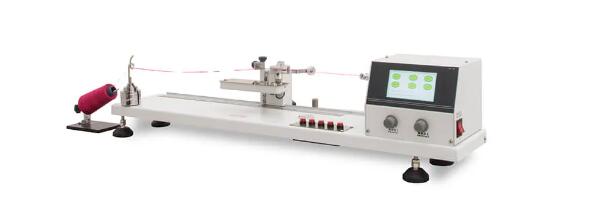-
What is the instrument used for the yarn twist test?
Edited by:Read:The instrument commonly used for the yarn twist test is the Yarn Twist Tester. A Yarn Twist Tester is a device designed to measure the twist of a yarn, providing a numerical value of the twist of the yarn as well as related data metrics.
A Yarn Twist Tester usually consists of the following main components:
1. Expansion Cup: a container for the yarn to be measured, with markings and scales to measure the change in twist of the yarn during rotation.
2. Motor and Drive System: Used to rotate the Expansion Cup to rotate the yarn for testing. The motor and drive system provides control of the speed and direction of yarn rotation.

3. electronic display and control panel: used to display and record yarn twist values and related data indicators. The control panel allows the user to set and adjust parameters.
4. Sensor: Used to detect the change of yarn twist during rotation and transmit the signal to the electronic part of the instrument for processing and calculation.
To use the Yarn Twist Timer, a sample of the yarn to be tested is first placed in the expansion cup and fixed to the instrument. The desired test parameters, such as rotation speed and direction of rotation, are then set via the control panel. After starting the instrument, the motor will rotate the expansion cup and the yarn will rotate with it, and the twist will be gradually calculated and recorded during the measurement. When the test is completed, the instrument displays the yarn twist value and other relevant parameters.
The yarn twist test is one of the most important quality control and quality assessment tools in the textile industry. By using a yarn twist meter, manufacturers can assess the twist level of their yarns to ensure that they meet product specifications and market demands. In addition, textile engineers and researchers can utilize yarn twist test results for yarn design and process improvement.
- 2024-04-19Paper ring compression strength tester standards
- 2024-04-19Cupping tester standards
- 2024-04-19Rubber and plastic tensile tester standards
- 2024-04-19Taber 1750 wear-resistant tester standards
- 2024-04-19Stone Chip Resistance Gravelometer standards
- 2024-04-18Diaper absorption speed tester standards
- 2024-04-18Diaper leakage tester technical indicators
- 2024-04-18Paint film impact resistance tester standards
- 2024-04-18Low temperature brittleness tester principle
- 2024-04-18Battery separator permeability tester technical indicators



